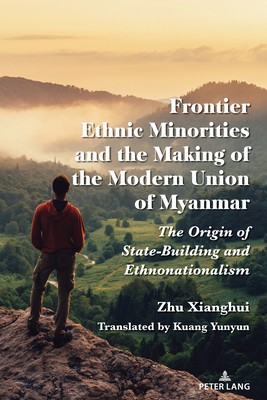
- We will send in 10–14 business days.
- Author: Zhu Xianghui
- Publisher: Peter Lang Publishing
- ISBN-10: 1433177188
- ISBN-13: 9781433177187
- Format: 15.2 x 22.9 x 1.4 cm, kieti viršeliai
- Language: English
- SAVE -10% with code: EXTRA
Frontier Peoples and the Making of the Modern Union of Myanmar (e-book) (used book) | bookbook.eu
Reviews
Description
Studies on ethnic minorities in the mountainous areas and the establishment of and the modern Union of Myanmar involves the contents at three aspects: first, the national consciousness of mountainous ethnic minorities and the development of nationalism; second, the factors which have driven many ethnic groups to establish a union of the state; and third, the external conditions established by the Union of Myanmar, namely the special historical environment and external factors, including the role of the British government in mountainous ethnic minorities and the political attitude of Burma Proper.
The book consist of three parts: the first part mainly describes the geographical distribution, historical origin and colonization process of mountainous ethnic minorities and the history of administrative system reform ranging from 1824 to 1945; the second part discusses the awakening of political consciousness of mountainous ethnic minorities and the political proposition in the process of seeking independence from 1945 to 1948, which was divided into three phases; the third part presents several issues worthy of further discussion and describes the views and insights of the author.The author finally concludes that the Myanmar government and the ethnic minorities in the mountainous areas should establish a new type of ethnic relationship with economic development, equal political rights and respect for ethnic minorities. Only in this way, can the ethnic problems in Myanmar be solved.
EXTRA 10 % discount with code: EXTRA
The promotion ends in 22d.18:50:31
The discount code is valid when purchasing from 10 €. Discounts do not stack.
- Author: Zhu Xianghui
- Publisher: Peter Lang Publishing
- ISBN-10: 1433177188
- ISBN-13: 9781433177187
- Format: 15.2 x 22.9 x 1.4 cm, kieti viršeliai
- Language: English English
Studies on ethnic minorities in the mountainous areas and the establishment of and the modern Union of Myanmar involves the contents at three aspects: first, the national consciousness of mountainous ethnic minorities and the development of nationalism; second, the factors which have driven many ethnic groups to establish a union of the state; and third, the external conditions established by the Union of Myanmar, namely the special historical environment and external factors, including the role of the British government in mountainous ethnic minorities and the political attitude of Burma Proper.
The book consist of three parts: the first part mainly describes the geographical distribution, historical origin and colonization process of mountainous ethnic minorities and the history of administrative system reform ranging from 1824 to 1945; the second part discusses the awakening of political consciousness of mountainous ethnic minorities and the political proposition in the process of seeking independence from 1945 to 1948, which was divided into three phases; the third part presents several issues worthy of further discussion and describes the views and insights of the author.The author finally concludes that the Myanmar government and the ethnic minorities in the mountainous areas should establish a new type of ethnic relationship with economic development, equal political rights and respect for ethnic minorities. Only in this way, can the ethnic problems in Myanmar be solved.


Reviews